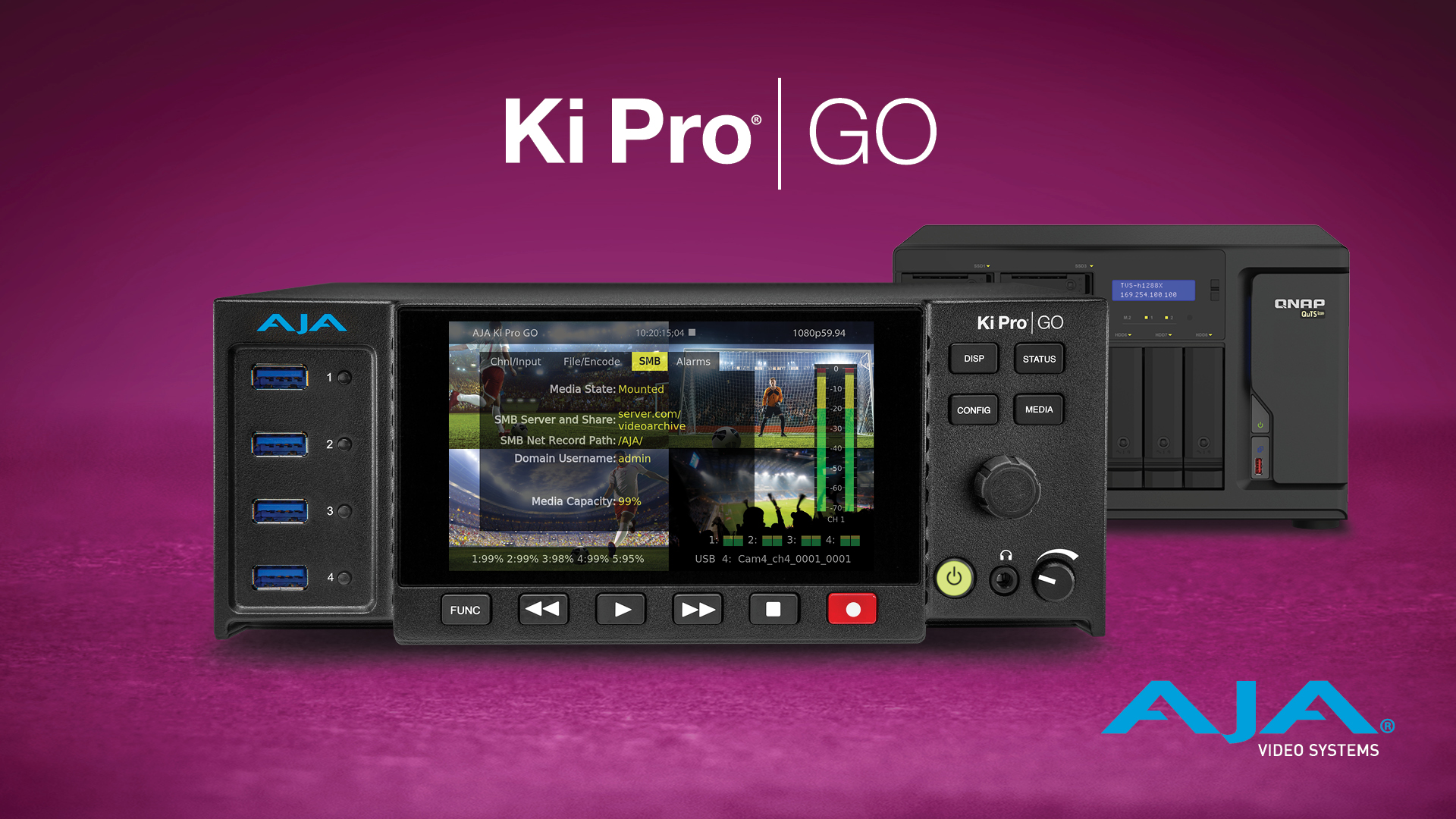
In modern production workflows, a hybrid cloud-baseband approach to infrastructure affords a range of advantages and enables users to benefit from the convenience of IP and virtualization alongside the reliability of streamlined and production-proven SDI point-to-point technology.
Streamlining hybrid workflows with a range of secure, reliable and scalable technologies that support high bandwidth content is key, as production demands for higher resolution and higher fidelity video and audio amplify. Delivering quality imagery and pristine sound that audiences are accustomed to within tight deadlines – as driven by the ever-increasing content boom – requires efficient and high performance workflow technologies. For security of signal and a modernized pipeline, a powerful combination of cloud and baseband technologies are the ideal mix for workflows in 2021.
Benefitting from SDI Baseband
For solid point-to-point signal transport at physical production locations, SDI baseband workflows still reign as the most secure, reliable and predictable. 12G-SDI is ideal for a wide range of production scenarios, including sports and live events where there is zero margin of error for latency, downtime or equipment failure. Whether working with 4K/UltraHD, high frame rate or HDR deep color content, transmitting 12G-SDI signals over optical fiber offers simplified single-cable transport of high bandwidth content over long distances (up to 10 km). Increasing cable runs with 12G-SDI over Fiber enables physical distancing between crew members and equipment on location, especially critical as COVID-19 safety protocols continue to be implemented throughout 2021.
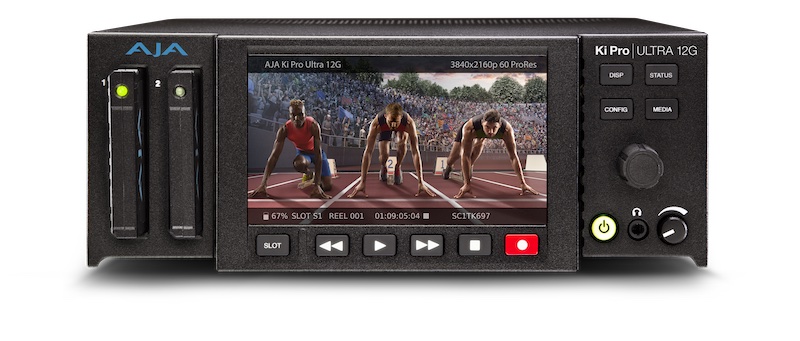
AJA Ki Pro Ultra 12G. Image: AJA.
When seeking to bolster production infrastructures with SDI baseband technologies, consider the workflow requirements. For managing up to 4K/UltraHD content, seek out 12G-SDI solutions like AJA’s Ki Pro Ultra 12G, a single-channel 4K/UltraHD Apple ProRes or Avid DNxHR recorder and player, or four-channel ProRes HD recorder. Ki Pro Ultra 12G is a versatile capture solution for any production environment where high-quality, reliable recording is required, featuring flexible connectivity options that include 12G-SDI, HDMI v2.0 and optional Fiber inputs and outputs for extending signals. When working in H.264, the most widely used codec and industry standard for video compression, tools like AJA’s Ki Pro GO multi-channel H.264 recorder and player offer up to four channels of simultaneous HD or SD recording to off-the-shelf USB storage. Ki Pro GO features 4x 3G-SDI and 4x HDMI digital video inputs. The recent Ki Pro Go v3.0 firmware update introduces new network recording that enables any channel to be simultaneously recorded directly to network attached storage (NAS) via Ki Pro GO’s integrated GigE port, providing a central storage location for primary or backup recording channels independent of local USB storage. The key advantage of Ki Pro GO is convenient accessibility, providing users with the ability to capture 3G-SDI and HDMI signals and record H.264 content that can be accessed across a network; files can also be used before a recording is even finished.
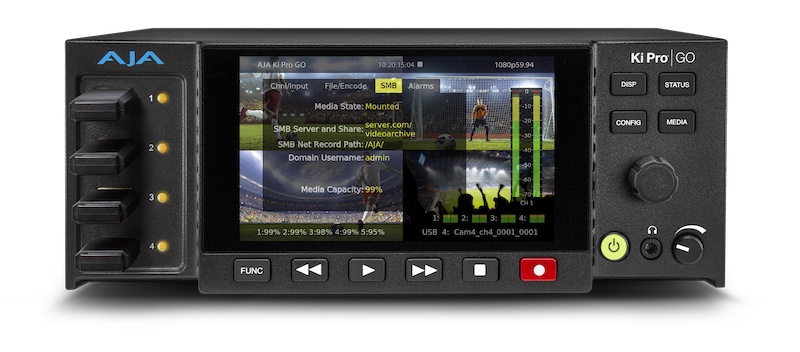
AJA Ki Pro GO. Image: AJA.
Combining Baseband Technology With Cloud-Based Delivery
Streaming workflows are a hybrid approach that combines baseband technologies with OTT or cloud-based delivery to CDNs. Video streaming platforms also use cloud scaling to enable greater reach at minimal cost. While already established as a de facto video transport mechanism prior to 2021, streaming is ideal for remote workflows, which has resulted in a surge of widespread adoption due to COVID-19. Streaming is an affordable method of content delivery with many advantages that include instant playback, live transmission, adaptive quality depending on viewer connection speed, and video on demand for offline use.
When designing a streaming delivery system, consider the video sources and how signals will be connected to the media server delivering the stream. If you need to capture HDMI or SDI signals for live streaming or video conferencing, AJA’s U-TAP is an affordable tool as a high-quality source input for Zoom, Teams, FaceTime and many other software packages. AJA’s U-TAP devices bring professional connectivity with professional-quality video capture to virtually any laptop or workstation, featuring affordable USB 3.0 plug-and-play and no software drivers to install. For more advanced H.264 encoding and streaming from an HDMI or SDI video signal, AJA’s HELO standalone appliance offers production-proven reliability and high-quality performance at the touch of a button. During live streams, HELO also offers simultaneous recording to a shared network or removable media drives.
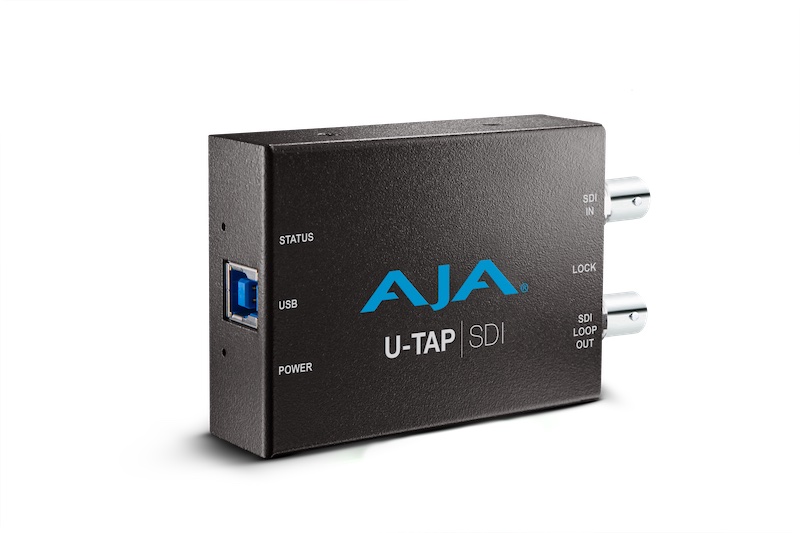
AJA U-TAP SDI. Image: AJA.
Managing Multi-Channel Streams Over Public Internet
For hybrid cloud and baseband streaming workflows, moving content between ubiquitous, uncompressed SDI to and from a range of efficient streaming and contribution codecs, protocols and transports is critical. Developing a pipeline to support this pursuit has traditionally proven both expensive and inefficient. To meet this demand, AJA introduced BRIDGE LIVE, a powerful new standalone plug-and-play gateway streaming solution for UltraHD and multi-channel HD video signals. BRIDGE LIVE converts baseband video to-and-from industry-standard compressed streams and powers secure and reliable transport with SRT over public internet.
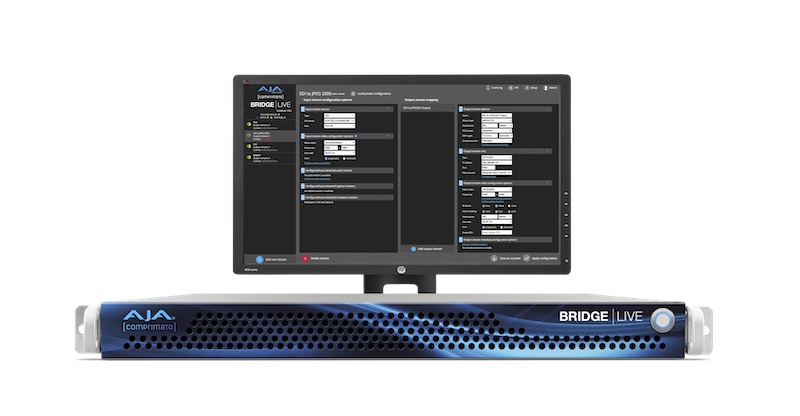
AJA BRIDGE LIVE. Image: AJA.
Leveraging the Cloud
Cloud technologies and workflows are diverse and range from IP networks, to virtualized toolsets, to fully cloud-based production pipelines. IP networks afford a range of advantages that both complement and differ from traditional SDI baseband cable transport, including denser routing opportunities, remote control and the ability to send signals almost anywhere within a network. Solutions that bridge legacy baseband products with the newest IP technologies are used to create hybrid workflows, including AJA’s robust lineup of powerful and portable IP Mini-Converters. AJA IP Mini-Converters are designed for the transport and reception of IP video for both encoding and decoding, with a wide variety of models available for SMPTE ST 2110 uncompressed video and audio over IP with 10 GigE connectivity. Adopting cloud-based infrastructure for production workflows offers additional advantages, including the ability to store and retrieve metadata, virtualized toolsets, workflow scalability and less costs associated with on-premises hardware or infrastructure.
Cloud service utilization and implementation will continue to grow and gain traction in 2021. Looking ahead to the new year, it is recommended to optimize cloud and baseband technologies in a hybrid workflow approach that leverages the benefits of both.
For more information, visit: www.aja.com.
Tags: Technology Production Sponsored


Comments